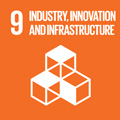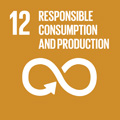- Docente: Alessandro Morri
- Credits: 6
- SSD: ING-IND/21
- Language: Italian
- Teaching Mode: Traditional lectures
- Campus: Forli
- Corso: First cycle degree programme (L) in Mechanical Engineering (cod. 0949)
-
from Sep 17, 2025 to Dec 19, 2025
Learning outcomes
Lo Studente acquisisce le conoscenze di base sui materiali metallici per impieghi strutturali. Attraverso lo studio delle correlazioni tra processo di fabbricazione, struttura e proprietà dei materiali metallici, lo Studente consegue le competenze per la scelta del materiale più idoneo ad una specifica condizione di esercizio. Lo Studente svolge attività di laboratorio riguardanti la caratterizzazione metallografica e frattografica dei materiali metallici, ivi comprese le metodologie per l’analisi dei danni (failure analysis).
Course contents
Crystal structure and imperfections in the atomic arrangement: main crystal structures of metals and their effect on mechanical properties. Point defects and atom movements in materials (diffusion).
Alloys and phase diagrams. Phases and structural constituents. Cooling curves, phase and lever rules. Solidification and cooling of binary metal alloys.
Solidification microstructures and defects: nucleation and growth of pure metals and alloys. Influence of solidification microstructure and defects on mechanical properties
Mechanical testing and properties: tensile, hardness, fatigue, impact, creep
Dislocations and theory of plastic deformation.
Strengthening mechanisms of metals: solid solution, strain hardening, grain refinement, precipitation and dispersion.
The Fe-C phase diagram: Phases and micro-constituents. Cooling and solidification of steels and cast irons in equilibrium conditions. Equilibrium microstructures of carbon steels.
Designation and classification of steels.
Phase transformation in steels: Ferritic, pearlitic, bainitic and martensitic phase transformations. Bain curves (TTT and CCT curves).
Heat treatments of steels: annealing, normalizing, quenching, tempering.
Surface heat treatment and thermochemical diffusion treatments: Surface hardening, carburizing, nitriding.
Cast Irons: (white, grey and ductile). Designations, macro and microstructures, properties and applications.
Aluminum alloys: main alloying elements, designation, microstructures, thermal treatments and mechanical properties.
Microstructural and fractographic analyses of metals
Readings/Bibliography
Course material (slides and notes in Italian).
S.Barella, A. Gruttadauria, “Metallurgia e Materiali non metallici”, Eusculapio
A. Cigada, T. Pastore "Struttura e proprietà dei materiali metallici", Mc-Graw Hill
W. Nicodemi “Metallurgia - Principi generali”, Zanichelli
G.M. Paolucci, “Appunti dalle lezioni di Metallurgia per la laurea in Ingegneria Meccanica” Vol.1-2, Edizioni Libreria Progetto, Padova
Donald R. Askeland, P Webster "The science and engineering of materials", Chapman & Hall
W.D. Callister, “Scienza e ingegneria dei materiali. Una introduzione”, Edises (2007).
W.F.Smith, J.Hashemi, “Scienza e Tecnologia dei Materiali” McGrawHillTeaching methods
Class lectures will be given according to the timetable, interactive learning tests, and audiovisuals on the main concepts.
Assessment methods
The final examination is aimed at evaluating the level of learning of the basic concepts of metallurgy. In particular, it assesses the understanding of the criteria for: (i) the selection of the most suitable metallic materials and heat treatment treatments for the production of mechanical components, operating under different conditions, (ii) the identification of the causes of malfunctions correlated to the characteristics of the materials.
It consists of a written test (45 minutes on the EOL website) and an oral examination. The students will access the second part of the exam (oral examination) only if they achieves at least 20 correct answers in the first part (multiple choice test). The final grade will be calculated as the average of the grades reached in written tests and oral examinations.
Textbooks are not allowed during the examination.
Examination schedule is available in advance on the University of Bologna website. Students willing to take the exam must join the student list on the website, carefully considering deadlines. Students are required to show their ID before taking the exam.
Teaching tools
PC and projector, blackboard.
The teaching material will be available on the website VIRTUALE.
Office hours
See the website of Alessandro Morri
SDGs


This teaching activity contributes to the achievement of the Sustainable Development Goals of the UN 2030 Agenda.
